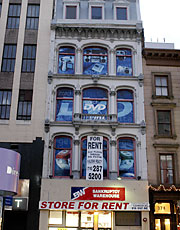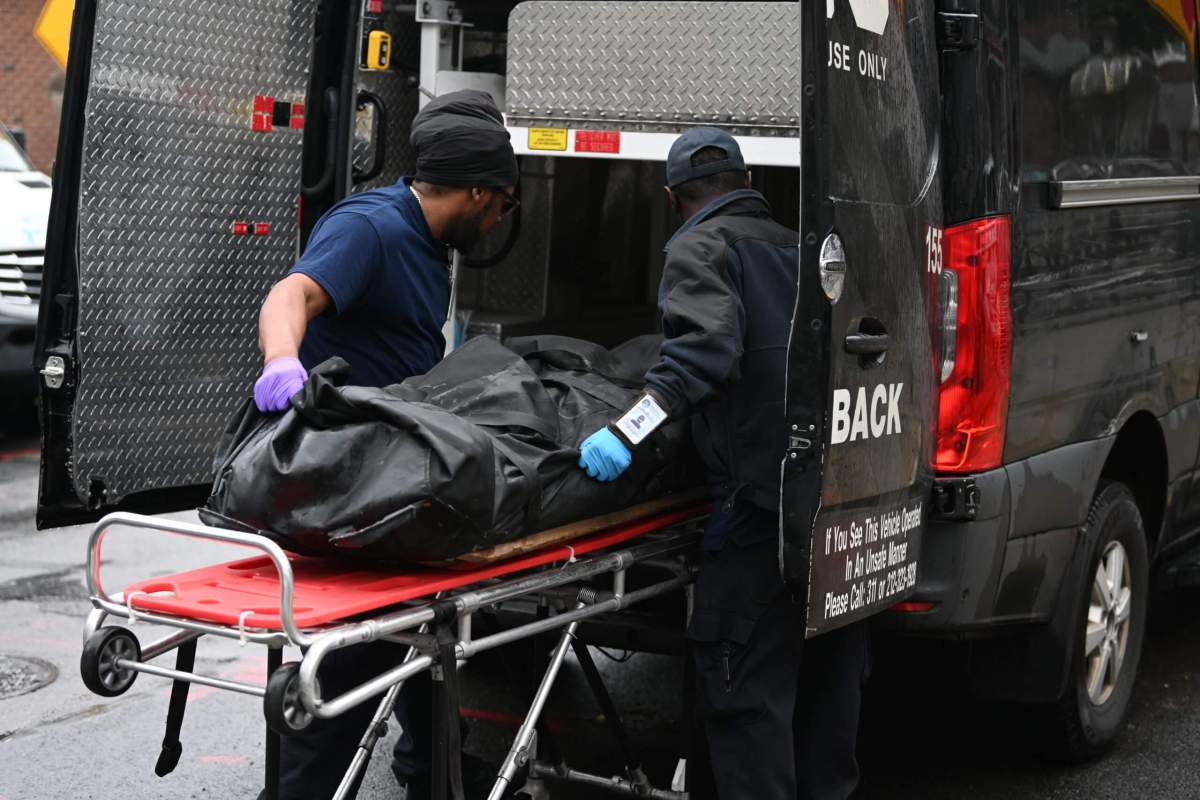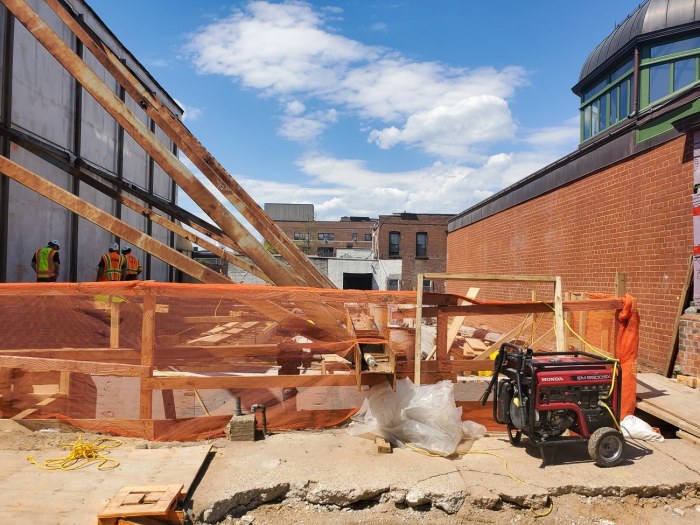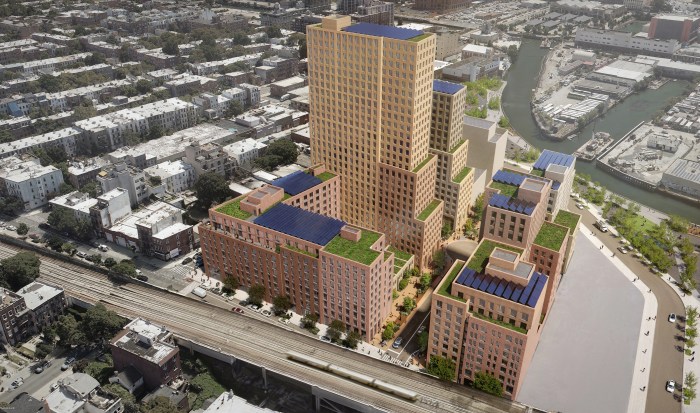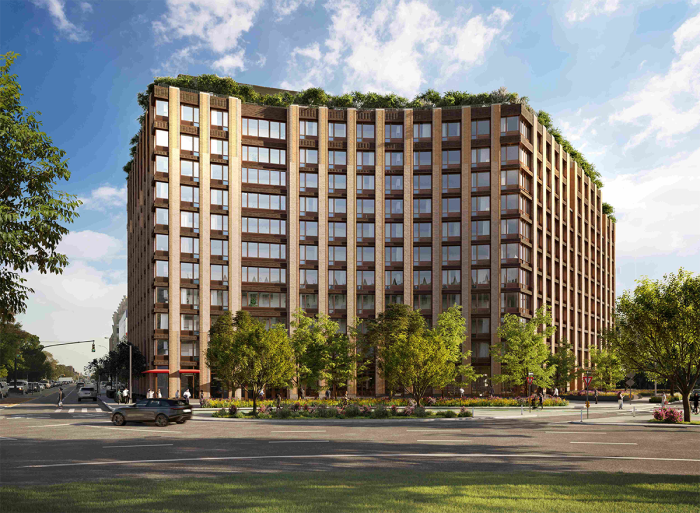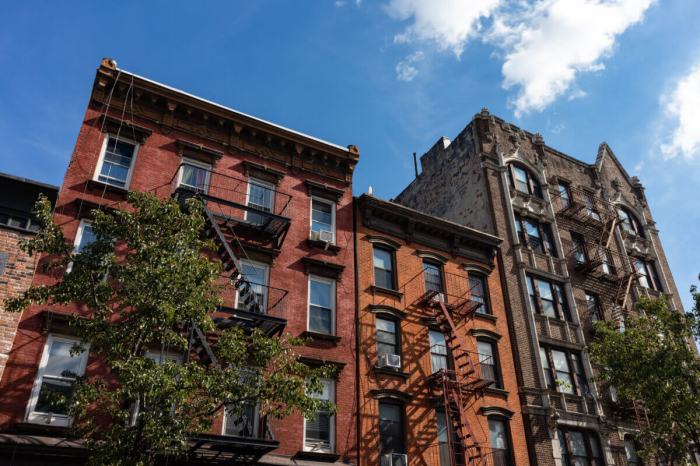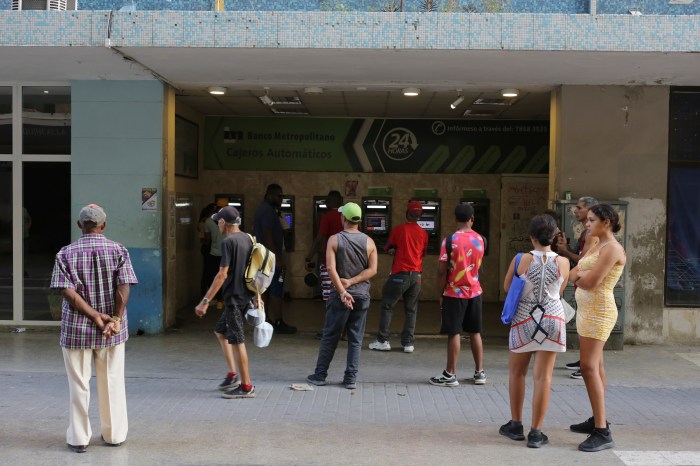Is Fulton Mall the next Soho?
The people who oversee the bustling downtown bazaar think so, thanks to
a renewed push to convert hundreds of upper-floor offices into artists’
lofts.
“My experience is loft conversion in Soho and Tribeca,” said
Albert Laboz, the owner of a seven-story landmark building at 505 Fulton
St. on the outdoor pedestrian mall.
“We’d like to do the same thing down there and we want the city
to help us the way they helped neighborhoods in Manhattan,” added
Laboz, who is also co-chairman of the Fulton Street Mall.
Many regard the mall — which runs from Boerum Place to Flatbush Avenue
and is dominated by chain stores, cellphone emporiums, 99-cent joints
and electronic outlets — as a missed opportunity, given its location
in the center of Brooklyn’s business district.
Yet the mall is the borough’s busiest, with 100,000 shoppers daily,
according to the Fulton Mall Improvement Association. Its commercial rents
rival only Seventh Avenue in Park Slope and Montague Street in Brooklyn
Heights, according to the Brooklyn Chamber of Commerce.
Yet mall officials say the Target department store at Atlantic Center
— plus Bruce Ratner’s proposed Atlantic Yards complex at Flatbush
and Atlantic avenues — show that Fulton Mall needs to change its
mix.
“If you sit still, you actually can go backwards,” said Fulton
Mall Improvement Association President Michael Weiss. “The big boxes
and other retailers are competitive. Fulton has to do things that insure
its future.”
Weiss believes that adding residential lofts to the mix at Fulton would
add to its “diversity” by bringing new people in.
“What people have found in Red Hook and DUMBO is live-work [studio
and residential space together] and it has been good for the neighborhoods.
We could easily convert some of the space above the storefronts into that
kind of loft space,” he said.
The only question would be whether the spaces would be affordable to artists
and advantageous to property owners, Weiss said.
Fulton Mall was part of the Downtown Brooklyn Plan that was approved by
the city last year, but no specifics were offered.
A loft-filled mall does fit in with the Plan’s stated goal of a mixed-use
downtown, but opponents say any proposal to bring artists to Fulton Street
smacks of gentrification.
“That space is very important to black New Yorkers,” said Allison
Dean, an urban planner who studied the mall for Pratt Institute.
“People grew up going there with grandmothers,” Dean said. “When
you ask why they still shop there, they say it’s one of the last
places left in Brooklyn where they can still bargain for a deal. I don’t
see how loft development will benefit these shoppers.”
Nonetheless, Weiss’s group has begun talking with downtown planners
and will soon offer proposals to the city, which would have to rezone
the area for residential use.
Proponents believe the Fulton district, with its Romanesque buildings
and busy streets, could be eligible for the same city subsidies that lured
residential developers to convert old office buildings in Lower Manhattan.
If artists start filling the lofts upstairs, the businesses downstairs
are destined to change, too, experts said.
“Nicer stores are coming,” said Eddie Aydag, the owner of Mirage
Boutique, a woman’s clothing store with two locations on the mall.
But Aydag thinks the strip will be less like Soho and more like 34th Street
in Manhattan.
Before the Civil War, Fulton Street was a way station along the Underground
Railroad, as escaped slaves headed for Canada via the Fulton Ferry docks.
By the end of the 19th century, the street was known for its stately brick
buildings and upscale department stores.
The fancy buildings remain, but the big-name stores and luncheonettes
have long since fled to the suburbs. The high-volume stores that filled
the vacuum remain.. .


